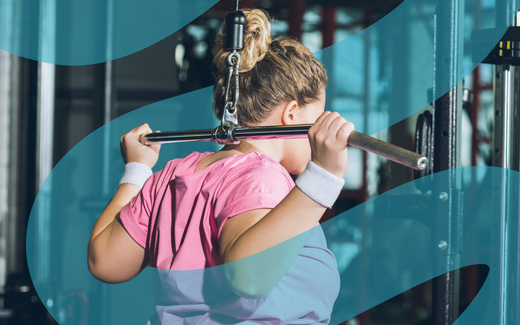Athletes need to pump more iron than the general population — that means in the weight room and on their plate.
We’ve frequently compared hemoglobin to the gasoline that fuels a car. Without it, your body would simply start slowing down before you refueled.
Most of the general population, though, are four-door sedans, whereas athletes are more like a high-powered racing vehicle. They’re going to need more frequent fuel stops to stay in first place, or risk falling behind and bowing out of the competition.
So is more iron the secret to becoming a better athlete? Well, not really but whether you’re playing basketball or trying to complete an 800-meter relay you will need a little more iron in your diet to make sure you stay in the zone.
Why Do Athletes Need More Iron?
Let’s go back to the car example — if you use your vehicle to commute to and from work, you’re probably going to need to visit a gas station maybe once a week or so (depending on how long you drive for). But if you’re zipping your car at 100 miles-per-hour for more than an hour, that fuel supply is going to deplete much quicker than that.
It’s the same thing with our bodies. Remember that hemoglobin is responsible for helping to transport oxygen to our bodies’ muscles to help keep it moving. The average person will obviously need to refuel on iron (which helps create hemoglobin) throughout the day to keep that supply up, but athletes require a pretty steady stream of oxygen to their muscles.
Everytime a swimmer completes a stroke, or a baseball player swings a bat, their muscles are using up oxygen and their tank gets a little emptier. That means they’ll need to replenish their hemoglobin levels more often than someone who may work a desk job.
In fact, according to studies, anywhere from 17 to 50 percent of all endurance athletes are prone to anemia because of this, which can leave them fatigued or short of breath.
Athletes Anemia
There’s another condition that makes athletes more prone to anemia, and that’s the depletion of red blood cells through strenuous exercise. It’s called mechanically-induced hemolytic anemia, and it occurs when an athlete’s foot hits the pavement or a swimmer’s body hits the water.
Essentially, the force of the impact compresses our capillaries and as a result causes red blood cells to be destroyed. Again, that means we need more iron to help create new healthy red blood cells with plenty of hemoglobin to keep our oxygen levels up.
Can Eating More Iron Make Me a Better Athlete?
In a word: No. Athletes need more food, and thus more iron, than most people simply because their energy levels are greater. But taking an extra iron supplement isn’t the secret to entering the Hall of Fame.
Iron is important for a process called ATP synthesis (a fancy term for the body’s internal energy cycle), but more iron won’t create more energy. In fact, eating too much iron could lead to lung disease, dehydration, heart failure, kidney tumors, and even low oxygen levels in the blood.
It’s hard to give a recommendation on how much iron athletes eat, because so much of that is going to depend on their height, body composition, and activity levels. The best bet is to work with a certified dietitian or nutritionist to create a meal plan that works for you.
Use AnemoCheck Mobile to Stay on Your Game
We can’t be on the sidelines with you, but we can cheer you on virtually. Checking your hemoglobin levels regularly can help warn you if your levels are dipping below the foul line, and help ensure you stay on top of your game.
Click here to download the app via the iOS or Android app stores.





Leave a comment
This site is protected by hCaptcha and the hCaptcha Privacy Policy and Terms of Service apply.